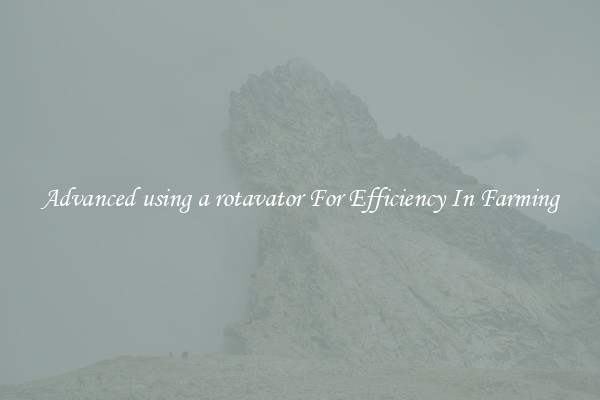Advanced using a rotavator For Efficiency In Farming
Rotavators are an essential tool for farmers looking to increase efficiency and productivity in their farming operations. By using a rotavator, farmers can save time and energy when preparing the soil for planting, leading to better crop yields and overall success.

Advanced use of a rotavator involves understanding the different features and settings of the machine to optimize its performance. Rotavators come in a variety of sizes and types, so it’s crucial for farmers to choose the right one for their specific needs. Factors to consider include the size of the farm, the type of soil, and the types of crops being grown.
One key aspect of using a rotavator effectively is setting the depth of the blades. This determines how deeply the machine will till the soil, which can have a significant impact on the success of the crop. Farmers should consider the type of crop they are planting and adjust the depth accordingly to ensure proper seedbed preparation.
Another important factor is the speed at which the rotavator is operated. Moving too fast can result in poor soil incorporation, while moving too slow can waste time and fuel. By finding the right balance, farmers can achieve optimal results in a shorter amount of time.
Proper maintenance of the rotavator is also essential for efficient use. Regularly checking and cleaning the blades, gears, and other components can prevent breakdowns and ensure smooth operation. Farmers should also replace any worn or damaged parts promptly to avoid costly repairs and downtime.
In conclusion, advanced use of a rotavator can greatly improve efficiency in farming operations. By understanding the features and settings of the machine, choosing the right size and type, and properly maintaining it, farmers can save time and energy in preparing the soil for planting. This leads to better crop yields, increased productivity, and overall success in farming.

View details

View details

View details

View details








